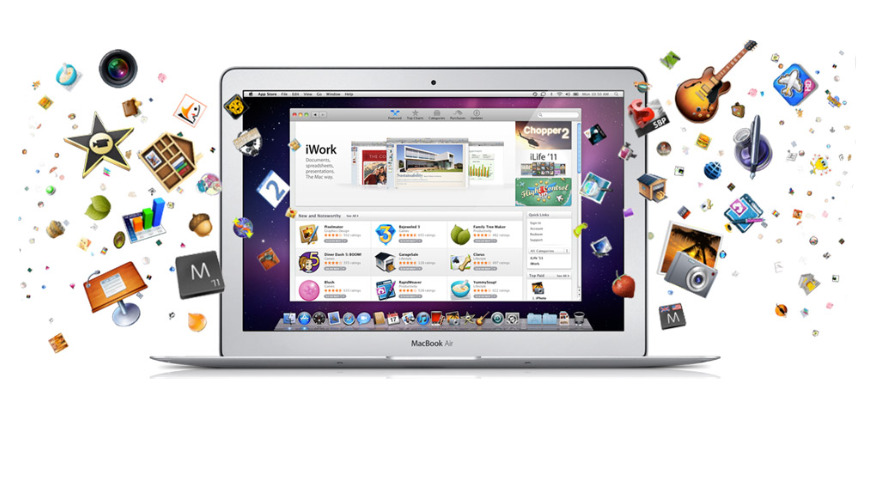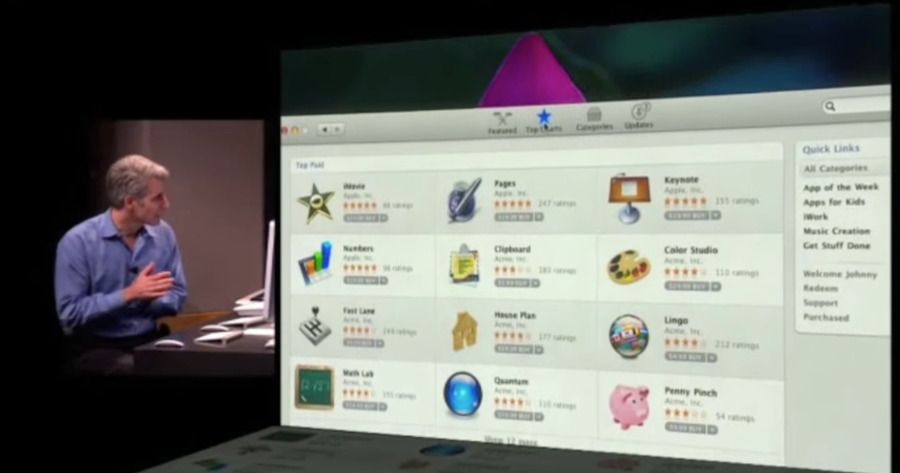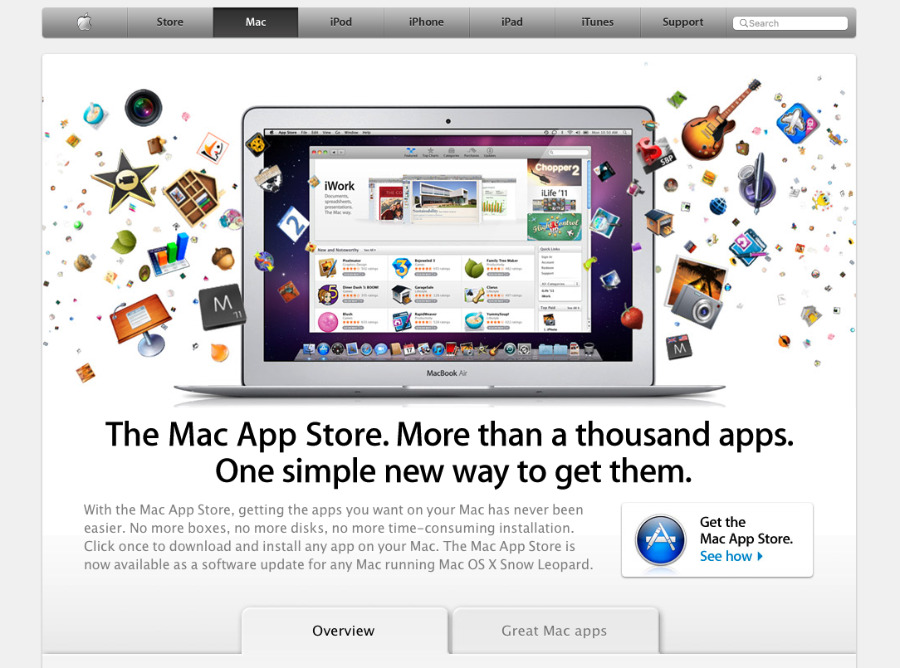Ten years of the Mac App Store, the 'best place' to buy apps
A decade after its launch, the Mac App Store failed to replicate the success of the iOS version, but it did make finding and downloading apps faster and more convenient for macOS users.
Within limits, you can install any macOS app on your Mac, wherever you got it from. And as successful as the Mac is, nothing comes close to being the hit that the iPhone has been. So it was never going to be possible to have a Mac App Store become the home for hundreds of thousands of apps.
Still, on January 6, 2011, the Mac App Store opened with 1,000 apps. According to AppShopper, by the same day ten years later, it had 18,950.
It's not just a case of that number being a fraction of the estimated 536,970 apps built for both iPhone and iPad. Some developers have baulked at joining the store, and complying with Apple's stringent rules.
Those rules are meant to prevent one app from controlling the Mac to perform operations the user doesn't want, but that also prevents some that they do. Rogue Amoeba, for instance, makes audio recording software, most of which needs macOS access the Mac App Store won't allow.
As well as technical reasons, there have been business and commercial ones that mean developers stay away. Microsoft, for instance, did not bring its Word, Excel and PowerPoint apps to the store until 2019.
App Store by the numbers
The number of available apps is one thing, the number of times each one is downloaded is another. Apple doesn't tend to talk much about the number of downloads the Mac App Store gets, but it was this figure that prompted the company to bring the store to the Mac.
"The App Store has been huge, as you know," said Steve Jobs as he announced the Mac App Store in October 2010. "On the iPhone, it's completely revolutionized mobile applications. On the iPad, it's phenomenal as well."
"Now how do we know this?" he continued. "Because over seven billion apps have been downloaded from the App Store. Seven billion. There's never been anything like this that we've seen in our careers. And so we'd like to bring it to the Mac."
Jobs was speaking at the "Back to the Mac" event, which unveiled an updated MacBook Air, and introduced Mac OS X Lion. "And as part of Lion, we're gonna have a Mac App Store," continued Jobs.
"It's going to be the best place to discover apps, just like it is on the iPhone and the iPad," he said. "Won't be the only place, but we think it'll be the best place."
That last part was delivered almost as a throwaway aside, but it was significant and Jobs knew it. For decades, Mac users had been buying apps from third-party developers, at first in cardboard boxes, and later via direct downloads.
What Jobs was really saying here was that the Mac App Store wasn't meant to stop this. The implication was that you wouldn't bother going anywhere else once you'd used the Mac App Store, but Apple was not going to lock out apps from other sources.
An expanding list of App Stores
When you say App Store, you mean the iOS one. It is the Biro or Hoover of app stores, it's been that successful since its launch in 2008.
The Mac App Store followed in 2011, then there was the Apple TV App Store, which was announced in 2015. Finally, so far, there is also now the Apple Watch App Store, which debuted alongside watchOS 6 in 2019.
Strictly speaking, the Apple Watch App Store is a subset of the iOS one. You can download certain apps directly to the Apple Watch itself, but you can still download all Watch apps via the iPhone.
Unlike the Mac version, then the respective App Stores are the only way to install apps on the Apple Watch and Apple TV.
That perhaps shows how Apple has changed over the first decade since the Mac App Store was introduced. It still does not stop you buying Mac apps directly from vendors outside the Store, but it does make it harder than it was.
For quite clear and practical security reasons — and surely at least in part also commercial ones — Apple has been blocking non-App Store apps. Since 2016, it has begun making it increasingly inconvenient to launch apps that aren't either from the store or from recognized developers.
More recently, though, it has also sought to radically expand on the number of apps available in the Mac App Store. First it did so via its Catalyst program, which aims to make it possible for developers to quickly bring iOS apps to the Mac.
Then it introduced Apple Silicon Macs, whose processors make it possible to run iOS apps right alongside Mac ones.
The legacy of the Mac App Store
As yet, the Mac App Store hasn't seen a massive rush of iOS developers racing to get their apps onto the Mac. Whether or not its numbers suddenly swell, though, the Mac App Store has successfully changed the way all of us use our Macs.
Undoubtedly, there are apps you've bought direct from the developer's website and that you will continue to update from there. No question, it's worth checking out the developer's site because sometimes, for instance, they're able to offer better upgrade deals than the Mac App Store allows.
Yet it is now the case that many Mac users can buy a new machine and simply download every app they use. They have to sign in with their Apple ID at the start of the process, but after that, there are no more authentication codes, no more login details.
Everything just works, and the Mac App Store makes buying and using apps much more convenient. It still isn't the only place, but perhaps Steve Jobs was right when he said that it would become the best one for most users.
Keep up with AppleInsider by downloading the AppleInsider app for iOS, and follow us on YouTube, Twitter @appleinsider and Facebook for live, late-breaking coverage. You can also check out our official Instagram account for exclusive photos.
 William Gallagher
William Gallagher













 Malcolm Owen
Malcolm Owen
 William Gallagher and Mike Wuerthele
William Gallagher and Mike Wuerthele
 Christine McKee
Christine McKee


 Marko Zivkovic
Marko Zivkovic









